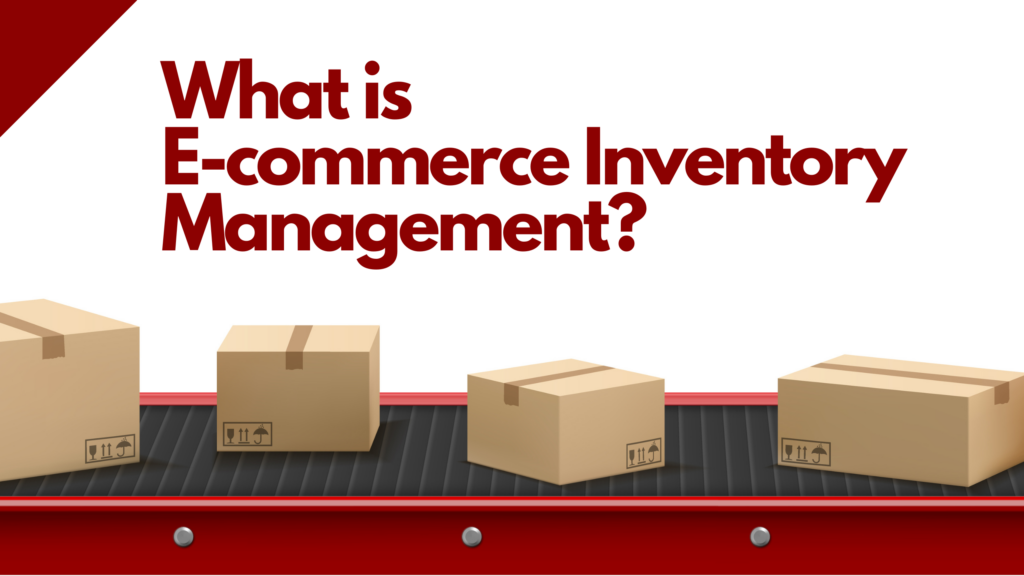
What is E-commerce Inventory Management? How to master it?

For your online business to be successful and profitable this year, you must understand the basics of inventory management. Ecommerce entrepreneurs may find poor inventory management a challenging obstacle regardless of their level of experience, the size of their company, the kind of products they sell, or their target markets.
Throughout the year and as you consider starting a new e-commerce business, you probably think a lot about how to handle and optimize inventory management. Making incorrect decisions when it comes to inventory management can be very expensive. Making wise decisions can be quite profitable.
Here are some terms and definitions you should know before handling inventory
management:
Inventory: The physical things, products, or objects you plan to sell to clients.
Stock keeping units (SKUs): Identifying codes used to organize and arrange products.
Variations: Changes to the same product, such as a new color.
Measure: Units you choose to measure your supply.
Supply chain: Procedures used in product production, management, and distribution makes up the supply chain.
Dead Stock: Merchandise you have on hand but aren’t necessarily able to sell.
Buffer Stock: The amount of additional inventory kept on hand to reduce risk when supply and demand are unpredictable.
Minimum Viable Stock: The quantity of product you must keep on hand in order to meet demand from customers and process orders promptly.
Reorder Point (ROP): The minimum level at which inventory must fall before ordering more.
Lead Time: The interval between ordering inventory from a supplier and when it arrives.
ABC Analysis: Three categories are used in the ABC Analysis method to prioritize your existing inventory: (A) high-value products with low sales frequency; (B) moderate-value
products with moderate sales frequency; and (C) low-value products with high sales
frequency.
First in First Out (FIFO): “An accounting system that assumes that saleable assets, such as inventory, raw materials, or components bought first were sold first.”
Just-in-Time (JIT): A fulfillment strategy in which inventory orders are made just in time to meet consumer demand. With this approach, you can avoid tying up cash in unsold inventory, but there is a danger that you won’t be able to handle an unexpected spike in demand for your products.
Dropshipping: A fulfillment strategy in which you don’t keep any goods on-site. Instead, orders are filled and inventory is delivered to the consumer straight from a third party.
Tips on E-commerce Inventory Management:
Tip 1: Understanding the Inventory Management
Understanding how the demand changes over time for your primary product category is the first step in inventory management. You’ll better understand when to order more or less inventory after doing this. You can determine when interest peaks over the year by looking at historical trends, such as demand in your product category over the previous 12 months. Google Trends and Google Analytics both offer information about demand, including which product pages are popular and which ones draw your consumers’ interest.
Tip 2: Predict all your Future Demands.
The next stage is to predict future demand once you have an understanding of the shifting levels of interest in your product. Forecasting may seem challenging or even impossible, but it simply entails using the past to predict the future. As global trends wax and wane, inventory forecasting enables you to modify how you order inventory year after year. You should also plan for seasonality, such as holidays and
special occasions. Google Trends and Google Analytics, once more, provide important information to this effect.
Tip 3: Ensure you have safety stock.
You should constantly prepare for the unexpected as a small business owner. The epidemic has demonstrated to us that panic buying is a real phenomenon with potentially grave consequences. The ability to maintain your position in the face of unforeseen situations depends on having safety stock. But it’s a fine line to walk: you want to have just enough extra product for a dreary day without overstocking the warehouse.
Tip 4: Set the lowest feasible stock.
Not only should you keep safety stock on hand, but you also need to watch out for your inventory levels falling to levels that could impact your supply chain. Setting minimal stock levels with the aid of efficient e-commerce stock management systems is one technique to assist in maintaining track of viable stock. To satisfy demand and prevent fulfillment delays, this is the lowest inventory quantity you can keep in your
warehouse.
Understanding the demand for that product as well as how long it takes to replenish out-of-stock inventory will help you arrive at this estimate. When sales fall below that threshold, placing another order with your supplier is time.
Tip 5: Don’t Forget about your warehouse
It’s fantastic to have an abundance of stock and high demand, but you won’t get very far if you don’t have a place to store them. You’ll need a system to make sure stuff can be found quickly and simply and that everything can be accounted for, whether it’s in a spare room or a warehouse.
After all, clients are more likely to return if you have an effective manner of delivering your products to them. If your budget permits it, think about employing an e-commerce inventory management system to manage your
warehouse operations.
The main asset of your business is inventory. Treat it as such. Implement the E-commerce inventory management techniques described above to improve your warehouse organization, your purchasing decisions, and your overall insight into the contents of your warehouse.






Responses